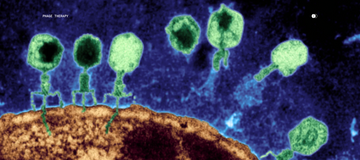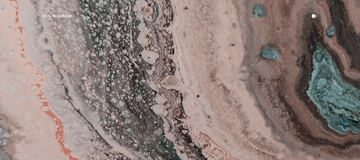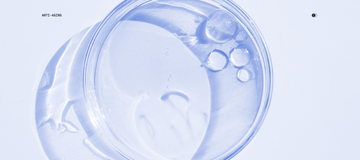Your skin is home to trillions of microorganisms that form a complex ecosystem known as the skin microbiome. This invisible community of bacteria, fungi, and viruses plays a crucial role in maintaining healthy skin barrier function, regulating inflammation, and protecting against harmful pathogens. What many people don't realize is that everyday lifestyle choices dramatically influence this delicate microbial balance, often explaining why skin conditions suddenly appear or worsen seemingly out of nowhere.
1. Geographic Location
Where you live fundamentally shapes your skin microbiome composition. Urban environments expose skin to different pollutants and chemicals compared to rural areas, while climate factors like humidity, temperature, and UV exposure create distinct microbial environments. Research shows that people living in different geographic regions harbor dramatically different skin bacterial communities, with those in humid climates typically showing higher microbial diversity.
Moving to a new city or climate zone can trigger significant microbiome shifts, potentially leading to unexpected skin reactions, breakouts, or sensitivity as your microbial community adapts to new environmental pressures.
2. Diet
Your dietary choices don't just affect your gut microbiome – they directly influence your skin's microbial ecosystem. High-sugar, processed foods can promote inflammatory bacterial strains while reducing beneficial microbes that support skin barrier function. Conversely, diets rich in fiber, fermented foods, and omega-3 fatty acids encourage diverse, balanced skin microbiomes.
Studies demonstrate that Western diets high in refined carbohydrates correlate with increased acne severity, partially due to microbiome disruptions that alter sebum production and inflammatory responses. When patients suddenly change their eating patterns, their skin often reflects these shifts within weeks through altered texture, breakouts, or healing patterns.
3. Hormonal Fluctuations
Natural and lifestyle hormonal changes due to puberty, menstrual cycles, birth control, pregnancy, IVF, and menopause create powerful ripple effects throughout the skin microbiome. Fluctuating estrogen and testosterone levels alter sebum production, pH levels, and immune responses, creating favorable conditions for different bacterial populations.
Many women notice their skin changes predictably with their cycle – this isn't just hormones acting alone, but hormones reshaping their microbiome landscape. During hormonal transitions, previously balanced microbial communities can shift toward inflammatory or pathogenic dominance, explaining sudden skin sensitivity or persistent conditions that develop during life changes.
4. Pets
Living with pets introduces constant microbial exchange that significantly impacts human skin microbiomes. Dog and cat owners show distinct bacterial signatures compared to non-pet owners, often with increased microbial diversity that can be protective against allergies and inflammatory conditions.
However, this exchange isn't always beneficial. Pets can introduce pathogenic organisms or alter existing microbial balances, potentially triggering skin reactions in sensitive individuals. The type of pet, their health status, and hygiene practices all influence these microbial exchanges.
5. Who you live with
Who you live with – or whether you live alone – profoundly shapes your skin microbiome through constant microbial sharing. Family members, roommates, and romantic partners exchange microbes through direct contact, shared surfaces, and even airborne transmission.
Couples living together develop increasingly similar microbiomes over time, while people living alone maintain more individualized microbial signatures. Changes in living situations, like moving in with a partner or transitioning to solo living, can trigger microbiome shifts that manifest as skin changes.
Skin Changes Can Signal Microbiome Disruption
Sudden skin changes often indicate underlying microbiome disruptions caused by lifestyle factors. New breakouts, increased sensitivity, altered healing patterns, or persistent irritation frequently trace back to recent life changes that disturbed microbial balance.
Supporting your skin microbiome through skin microbiome testing followed by targeted phage therapy, probiotics, prebiotics, postbiotics, peptides, and custom compounded prescriptions can help restore balance during lifestyle transitions, providing your skin with the tools needed to maintain optimal microbial health regardless of life's changes.
Understanding these connections and what your skin specifically needs empowers you to make informed decisions about lifestyle factors while supporting your skin's microbial ecosystem through evidence-based therapeutic approaches.
Discover your skin microbiome here.
Frequently Asked Questions
Q: How quickly does my skin microbiome change after lifestyle changes? A: Skin microbiome changes can begin within days but typically stabilize over 2-4 weeks following significant lifestyle modifications.
Q: Can phage therapy help if I move to a new climate? A: Yes, phage therapy can help by selectively targeting problematic bacteria while preserving beneficial and neutral strains, unlike antibiotics that disrupt the entire microbiome ecosystem.
Q: Do certain pets affect skin microbiomes differently? A: Dogs typically increase skin microbial diversity more than cats, while exotic pets may introduce unique bacterial strains requiring careful monitoring.
Q: How do hormonal birth control methods impact skin microbiomes? A: Hormonal contraceptives can stabilize microbiome fluctuations by reducing hormonal variations, often improving acne and skin consistency. Similarly, pregnancy can make skin better or worse depending on the individual's unique hormonal response and microbiome composition.
Q: Can diet changes alone fix microbiome-related skin problems? A: While diet significantly impacts skin microbiomes, combining dietary changes with targeted microbiome therapies typically provides more comprehensive results.
Scientific References
-
Byrd, A. L., Belkaid, Y., & Segre, J. A. (2018). The human skin microbiome. Nature Reviews Microbiology, 16(3), 143-155.
-
Prescott, S. L., et al. (2017). The skin microbiome: impact of modern environments on skin ecology, barrier function, and systemic immune programming. World Allergy Organization Journal, 10(1), 29.
-
Skowron, K., et al. (2021). Human skin microbiome: impact of intrinsic and extrinsic factors on skin microbiota. Microorganisms, 9(3), 543.
-
Claudel, J. P., et al. (2019). Acne and nutrition: hypotheses, myths and facts. Journal of the European Academy of Dermatology and Venereology, 33(10), 1786-1793.
-
Song, S. J., et al. (2013). Cohabiting family members share microbiota with one another and with their dogs. eLife, 2, e00458.




























